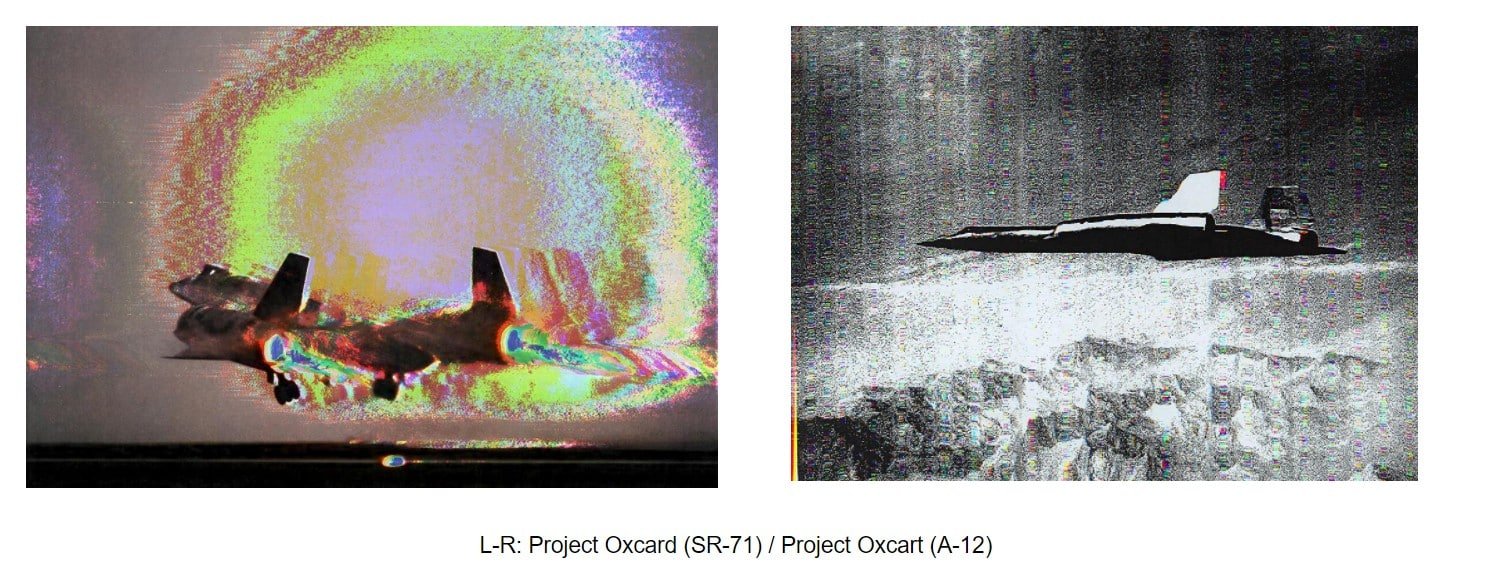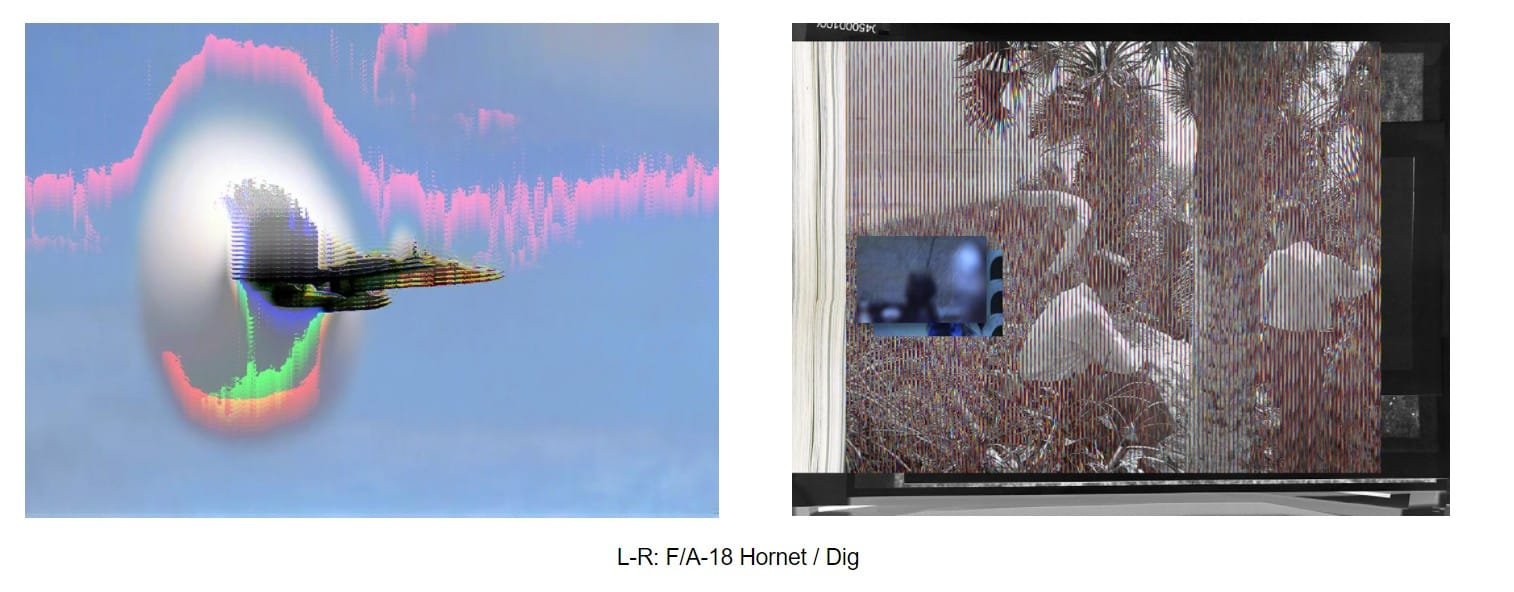
VIEWING DISTANCE
PHOTOGRAPHS BY EVAN HUME
Foreword by Evan Hume
Essay by Lily Brewer
DAYLIGHT
“The source images that make up the pictures in Viewing Distance provide a distorted and fragmented archival glimpse of photography in the service of US imperium. While many of the images date back to the mid-twentieth century, they have only recently been declassified and much information remains secret. These pictures represent the decades-long time delay from when knowledge comes into being and when it becomes publicly accessible.” —Evan Hume
Evan Hume first began filing Freedom of Information Act requests to obtain declassified photographs and documents when he was still a graduate student at George Washington University. Years later, his study of and subsequent archive of incomplete, redacted, “historical fragments” fills the pages of Viewing Distance. Time passage between when an image is taken and when it is viewed, and partial truths revealed as a result of obscured or redacted elements, combine and result in speculation and implication. It is within this space that Hume explores in this project with images that link decades and speak to the changing role of photography as a historical document.
In the twentieth century photography became a more pervasive and essential tool in the international political landscape, utilized for reconnaissance and surveillance, both on the ground and aerial.
“Viewing Distance combines photographs pertaining to Cold War developments in photographic technologies with contemporary documents and devices, connecting past and present with implications for the future,” Hume writes.
To achieve the imagery, Hume then layered, manipulated, and combined analog printing, digital collage, scanner manipulation, and data bending to create a deeper sense of “flux, open to alternate associations,” he writes, highlighting even further the divide of time, perspective, and associations drawn when incomplete or manipulated information is given to the public.

L-R: Project Oxcard (SR-71) / Project Oxcart (A-12)
Art historian Lily Brewer contributed an essay in the book, and she highlights the “new speculative postulations” that are invited when the full picture (literal and conceptual) is concealed in parts or as a whole.
“As he came into contact with more and more images and documents related to the use of photographic technologies deployed in reconnaissance and surveillance, Hume found that while plenty of photographs were legible, so many more were distorted and so heavily redacted they were rendered unintelligible. While he began to use more of the representational photographs as well as those that had been transformed through reproduction, he identified a tension between the available information related to weapons testing, surveillance, and the indeterminacy of those sources.”

L-R: Phenomena / The Million-Dollar Photograph / KH -9 Hexagon
The resulting images are at once literal and abstract, beautiful in their color dynamic range yet carrying at times dark contextual content in their origins of surveillance or weapons testing documentation: buried, glimpsed, censored.
Hume also manipulates sound and picture, and two-and-three dimensional realities, providing a new kind of visual landscape for speculation on information, international political schema, and the role of truth in both. In an example of visualizing audio, Hume takes supersonic jet and shock waves and translates the video image into audio software and then back into image that “mirrors the transformation of sound in a supersonic jet and its shock wave. The disconnection between the image and its sound waves emulates a space- and time-based distance between the photograph and its noise,” Brewer notes.

L-R: Project Oxcart (Pilot) / Ghost Stories / Equivalents
There is depth of content in both the words and pictures that fill a space, as well as the seemingly blank in betweens. Poets know this, and Hume does, as well.
About the Artist:
Evan Hume is an artist based in South Bend, Indiana where he is the Visiting Lecturer of Photography at the University of Notre Dame. He earned his BFA from Virginia Commonwealth University and MFA from George Washington University. Raised in the Washington, DC area, Hume’s approach to photography is informed by the experience of living in the nation’s political center for much of his life and focuses on the medium’s use as an instrument of the military-industrial complex and intelligence apparatus. He has exhibited widely at venues including Fotografiska (New York, NY), Filter Photo (Chicago, IL), and Furthermore (Washington, DC). Hume’s work has been featured by publications such as Aperture and Der Greif and is currently part of the Museum of Contemporary Photography’s Midwest Photographers Project.

L-R: F/A-18 Hornet / Dig
About the Contributor:
Lily Brewer holds a Ph.D. in History of Art and Architecture from the University of Pittsburgh specializing in modern and contemporary portrait and landscape photography in the United States southwest. Studying the concurrent development between photographic and weapon technologies, Brewer traces the contours of visual culture and history as it relates to war operations, military preparedness, conflict, and weapons testing during and after the Second World War and its visual articulations today. She is editor-in-chief and founder of www.sedimenta.org.
Book Details:
Paper over Board
9 x 10 in / 96 pages / 50 Color
ISBN 9781954119031
List Price: $45.00 US
Daylight is a non-profit organization dedicated to publishing art and photography books. By exploring the documentary mode along with the more conceptual concerns of fine art, Daylight’s uniquely collectible publications work to revitalize the relationship between art, photography, and the world-at-large. For more information, visit www.daylightbooks.org.
Daylight Media Contact:
ATTENTION READERS
We See The World From All Sides and Want YOU To Be Fully InformedIn fact, intentional disinformation is a disgraceful scourge in media today. So to assuage any possible errant incorrect information posted herein, we strongly encourage you to seek corroboration from other non-VT sources before forming an educated opinion.
About VT - Policies & Disclosures - Comment Policy



